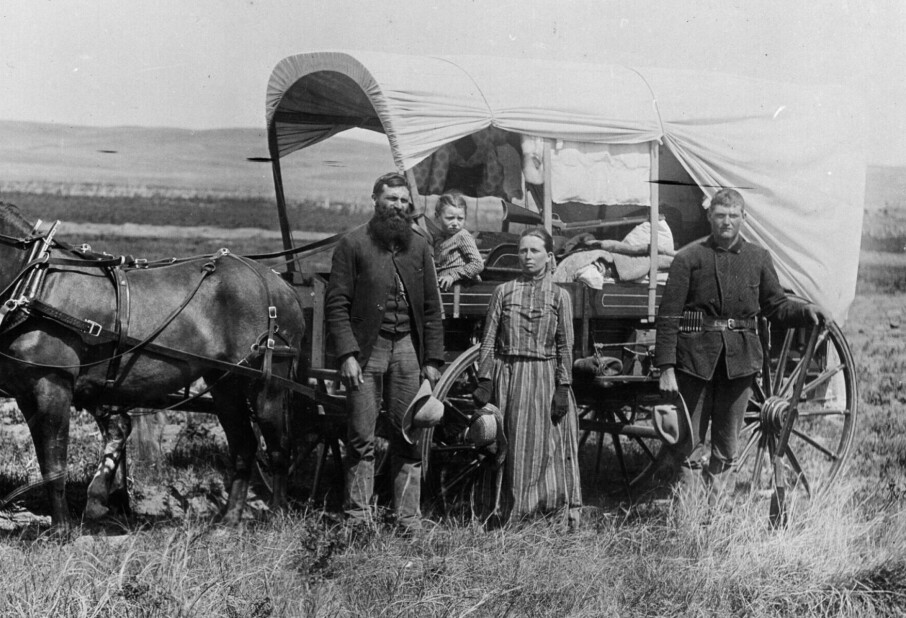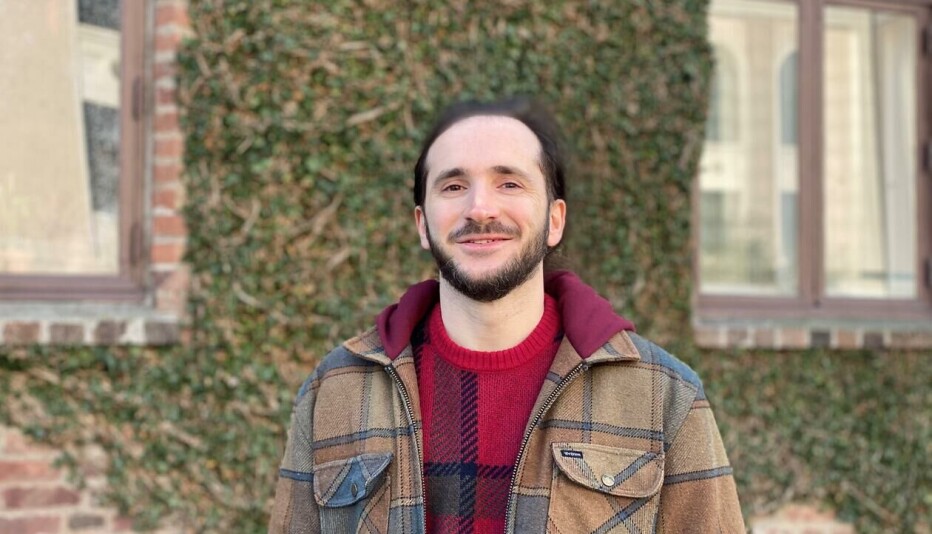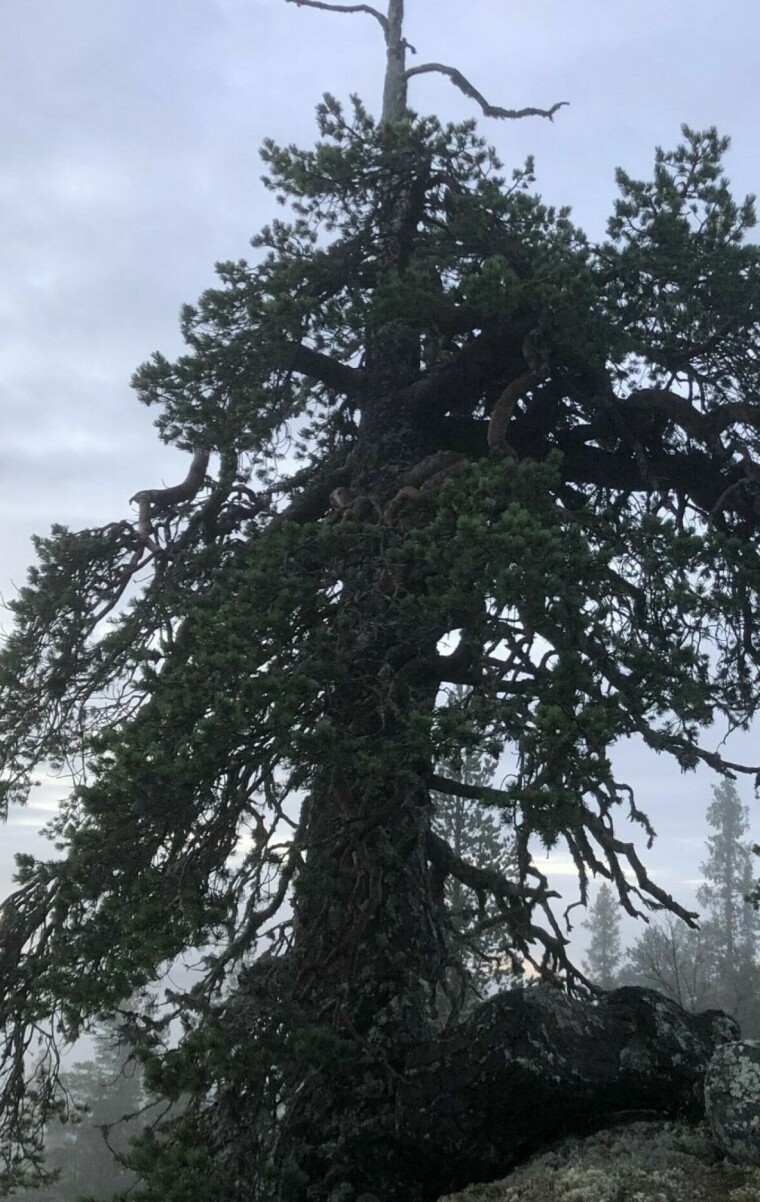
Only 1.7 per cent of Norway’s forests can be considered primeval.

In the most common forests, the trees are often uniform in size and age.
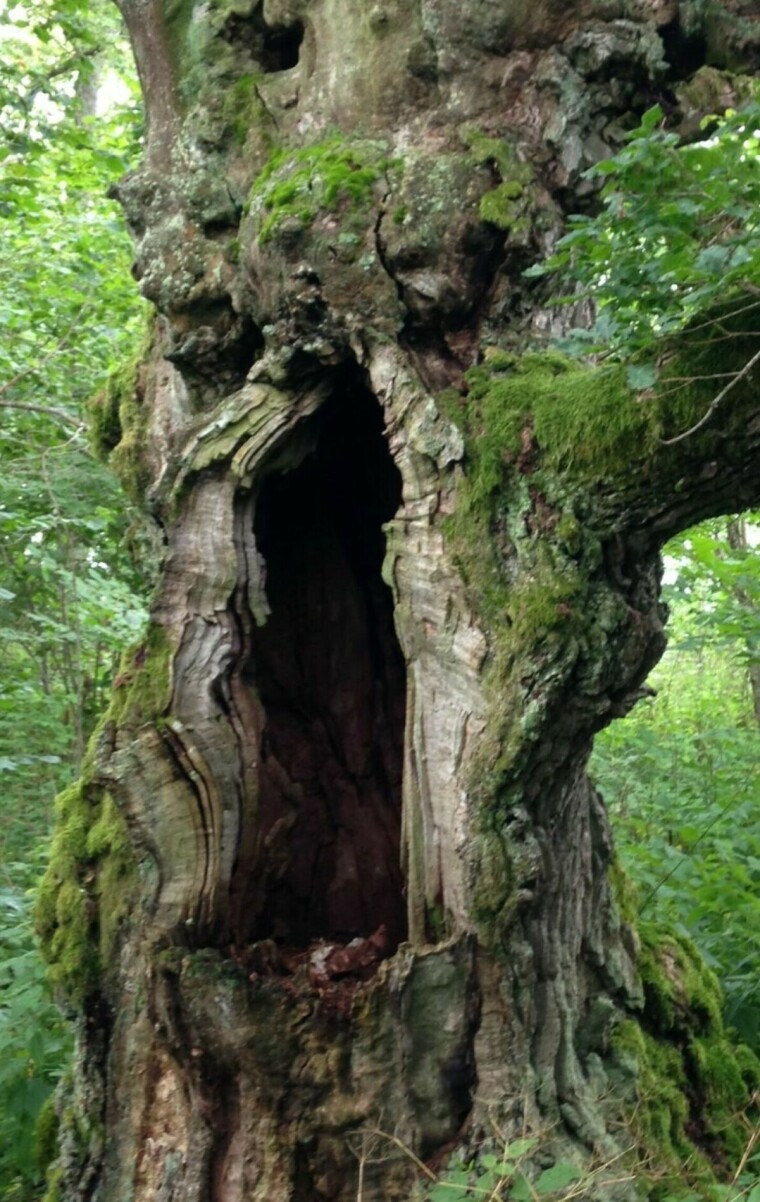
You rarely see old trees that have grown in place for hundreds of years.
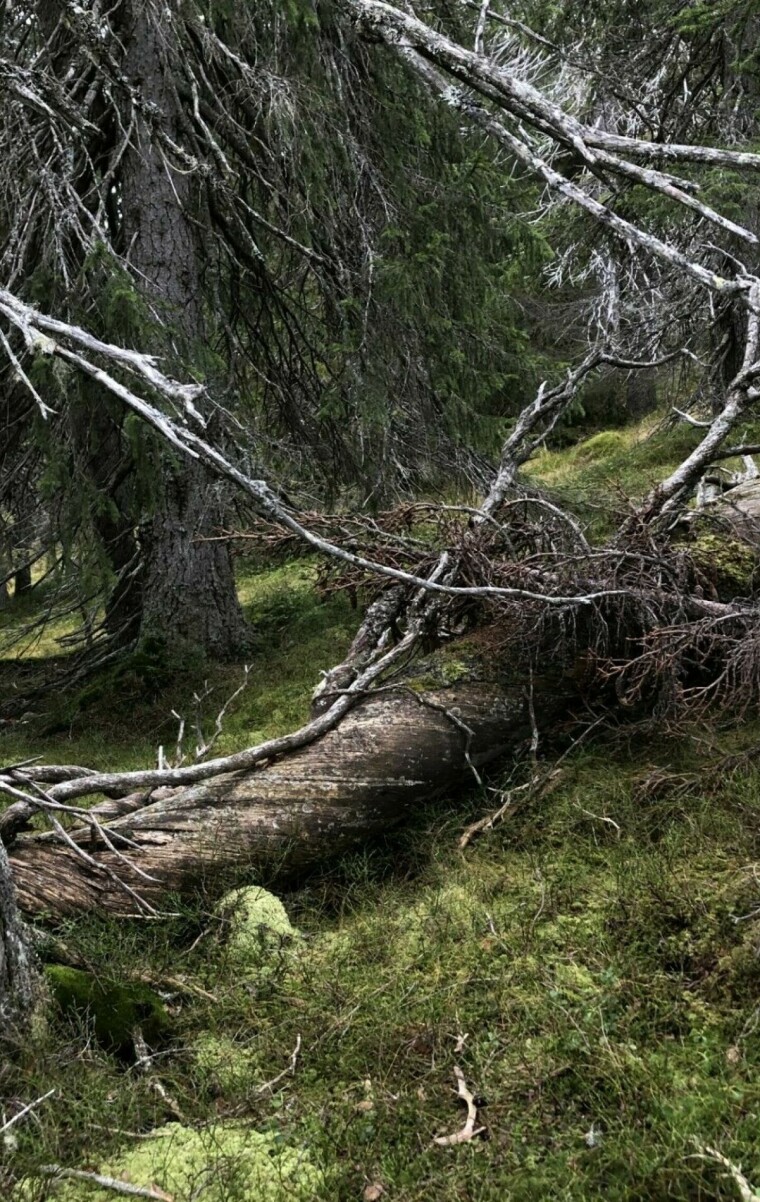
There are few large trunks rotting on the ground.
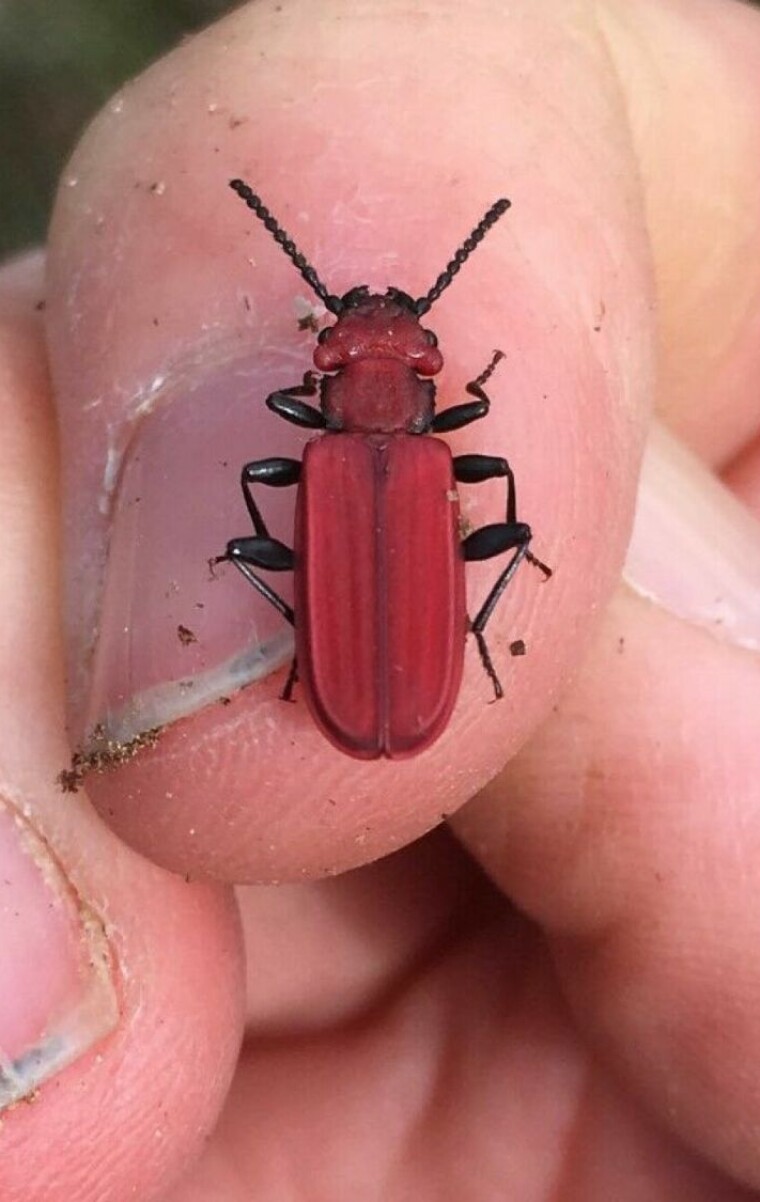
This means that many species struggle to find a place to live.
What would the forest be like if we weren't around?
We need to protect the old and varied forest that still exists in Norway, researcher believes.
Most of the forests we see in Norway are made up of straight trees that are all of the same height. These trees started growing after the last time the area was clear-cut.
Only 1.7 per cent of Norwegian forests are in a state known as primeval or old-growth forest, with no visible traces of human intervention.
“Many people may think that an orderly forest with pillar-like, uniform-sized pine or fir trees is almost a primeval forest — because the trees are tall and look quite old,” Anne Sverdrup-Thygeson says.

But an actual old forest looks quite different.
Imagine a forest full of trees of many different ages, sizes and shapes, including crooked trees and a multitude of dead trunks standing or lying on the ground.
“Most people don’t see that the forest they’re walking through has been profoundly affected, because they have nothing to compare it to,” Sverdrup-Thygeson says. She is a professor of conservation biology at the Norwegian University of Life Sciences (NMBU).
No idea where the most important old forests are
Nevertheless, there are still forests in Norway that have not undergone recent clearcutting or other forestry-related treatments. They are often called natural forests.
Just under one-third of Norway’s productive forests are natural forests. But this percentage is shrinking by around one per cent annually.

Parts of these forests have been heavily logged in the past. In the 19th century, many Norwegian forests were heavily logged.
But there are still forest areas with great biological value, where nature has largely been allowed to take its course. These are some of the characteristics of the primeval forest.
These forests are havens for species that struggle in areas where trees have been cut before they can grow old.
“We don't know where the richest natural forest is, because we haven't mapped it,” Sverdrup-Thygeson says.
Endangered species live in forests
In her new book, Skogen (The Forest), Sverdrup-Thygeson describes how the forest works when it is left to itself.
She believes this kind of information is important so we can discuss how we should protect the forest’s natural diversity.
“We need to know the starting point for the species that live in these forests,” she says. “About half of Norway’s threatened species live in forests, mainly because we don’t have old forests with really old trees and lots of different kinds of dead wood."

Trees that are 500 years old
What would you see in an ancient forest that has been left alone?
“You would see wonderful, living chaos everywhere,” Sverdrup-Thygeson says.
Imagine trees of all sizes. Some are small and young, some are tall and elderly, while others are monumental, ancient, and crooked.
“Trees are a bit like us humans, they change in appearance with age. They become crooked and wrinkled,” she says.
You might see pines whose tops have been flattened because they have been broken off several times. Huge branches curve out to the sides. Here, birds of prey can build their heavy nests year after year.
Some trees could potentially be as old as 500 years. Pine can easily reach this age, the researcher says. Spruce can also live for several hundred years if left undisturbed.
You could see trees so huge that you wouldn't be able to get your arms around them, Sverdrup-Thygeson says.
“These are trees that many people have never seen,” she says.

One-third are dead
It’s not just living trees that leave their mark on the forest, but also dead ones. In self-regulating forests, they exist in all shapes and stages of decay.
“A tree takes a long time to rot. It can take several hundred years from the time the tree dies until it has become soil again, especially for pine,” Sverdrup-Thygeson says.
The large trunks and dead trees in late stages of decomposition are what make a primeval forest special.
“These decaying trees are completely soft, with rotten dead wood. The trunk has lain there since the tree was allowed to live out its life and toppled over,” she says.
There could be trunks so large that if you sat on them, your legs wouldn't reach the ground.
Some of the trees have died while still rooted. The heartwood in pines may remain like naturally mummified statues. The lighter wood twists upwards.
Others have broken, fallen over, or fallen victim to a fungal attack.
A third of the wood volume in a primeval forest is dead wood.
“Today we only have 15 to 20 per cent of the amount of dead wood that would naturally be in a forest,” Sverdrup-Thygeson says.

Something for everyone
The variation in dead wood creates niches for many fungi and insect species.
“It's a bit like a city with different restaurants. There has to be something for everyone. A stick isn't just a stick if you're a species that depends on that kind of stick,” Svedrup-Thygeson says.
The size of the dead wood, its stage of decomposition, the type of tree, and how the tree died all play a role in determining which species will inhabit it.
The biodiversity in the specific area, whether it's sunny or shady, moist or dry, barren or lush, are also factors that contribute to creating different habitat niches.

According to the researcher, recognising these differences enables you to begin to understand what the forest looks like from the viewpoint of an organism that depends on these resources.
Mosaic
An old forest changes a little all the time.
When a tree falls, it opens up an opportunity for other trees. A tree that has been in the shade may speed up its growth. New sprouts try their hand.
“This is the everyday upheaval. Things are constantly being moved around a bit in the interior of the forest,” Sverdrup-Thygeson says.
When a tree is uprooted, it exposes the mineral soil underneath.
“It’s as if someone has dug up a new bed in the middle of the forest,” she says.
Less competitive species, which cannot keep up with heather, crowberry, and ferns, get a chance.
“This is how you can get a completely different biodiversity when a tree is uprooted, and you can see evidence of this for up to a hundred years afterwards,” she says. “There is a fine-scale mosaic on the ground and in the trees. There is a fantastic variety at all levels."

Forest fires
While small
changes happen all the time in the primeval forest, there can also be bigger upheavals.
According to estimates from Finnish researchers, 60 to 80 per cent of a Nordic primeval forest in a coniferous landscape would consist of really old forest. The remaining forest would be young.
Forest fires are something that can drastically change the forest.
Fire can kill numerous trees and leave behind a tangle of charred trunks. If the forest was dominated by pine, most of the old trees would survive.
“Their crowns have grown above the forest and they have thick bark. They are safe when a fire comes. The small pines will die,” Sverdrup-Thygeson says.
A new, even-aged generation would come up under the great survivors.
“When a forest fire sweeps through a spruce forest, many of the spruce trees will die. Spruce have their lower branches near the ground, have thinner bark, and a root system that is closer to the ground surface,” she says.
After a fire in a spruce forest, there is often a phase with a lot of deciduous trees.

Almost forgotten
After a natural fire, the forest will contain an excess of dead wood. The forest opens up, and more sunlight comes in.
“Insects are like heat exchangers; their metabolism depends on the external temperature. If the sun is shining and the temperature is high where they live, everything goes much faster,” Svedrup-Thygeson says. “A place with lots of dead wood, where the sun is shining and where part of the trunks are black, is a paradise for many wood-dwelling species."
This is a habitat that we hardly find in the forest today.
“This habitat has almost been forgotten, even among ecologists,” she says.
Other large-scale changes in the primeval forest may be due to strong winds knocking trees over. Such windfalls also produce a lot of dead wood, let the sun in, and create a feast for insects.

Bearded trees
In more protected areas in an old forest, it would be possible to find a large variety of mushrooms, mosses, and lichens.
Some lichen hangs like beards on ageing trees. They can themselves be a habitat for other organisms.
In Sverdrup-Thygeson’s book, she describe a study from Sweden where researchers cut 150 branches off spruce trees and counted how many small insects they found on them. In total, there were over 6,600 individuals.

It turned out that the branches from forests close to primeval forests had twice as much lichen on them and almost five times as many small insects per branch as branches from younger forests.
Lichens are strange creatures, Sverdrup-Thygeson says.
“Lichen is not one organism, it's a symbiosis. It's an interaction between one or more fungi and an organism that can perform photosynthesis, either an algae or a cyanobacterium,” she says.
Lichen are often sensitive to pollution and to drying out, and some do not adapt well in young forests. One type of lichen that can be found in old, open forests is often called old man’s beard.
“These are light yellow strands of lichen that hang like garlands in spruce trees. It is said that old man’s beard is the origin of the Norwegian Christmas garland,” Sverdrup-Thygeson says.
Alive and hollow
Another environment that can be found in an old, untouched forest is hollow trees. These are especially common in forests where there are a variety of deciduous tree species such as ash, linden, elm, and maple, with oak as the queen, according to Sverdrup-Thygeson.
“Oak is a tree that can live to be very old. Unlike pine, oak is often attacked by rot in the middle. It doesn't matter much because the tree stands firm anyway and can be hollow for 500 years without problems,” she says.

Inside the hollow space, so-called 'wood mould' forms. This is a mixture of rotting wood, fungal threads, excrements from insects, and perhaps the remains of a bird's nest or wasp nest. This combination helps to make the wood mould nutritious.
“This kind of wood mould is popular among many of the rare small insect species. The inside of an old hollow oak is like a gourmet restaurant for these insects,” she says.
Some of the large beetles in Norway are adapted to live in places like this, such as the rusty click beetle (Elater ferrugineus); a beetle called Protaetia lugubris, or the very rare hermit beetle (Osmoderma eremita), the conservation biologist explains.
Other species are dependent on large trunks that lie on the ground.
An endangered beetle species, Ceruchus chrysomelinus, needs massive rotten trunks of spruce or oak where a fungus has already been active and turned it into a soft, reddish-brown mass, Sverdrup-Thygeson says.
Another beetle goes by the unofficial name 'old forest buck'.

As a larva, it spends several years gnawing its way into large, dead pine trunks. Eventually, it pupates under the surface, and the mature beetle pushes its way out through a large exit hole that is easy to recognise.
Hope more people get involved
Sverdrup-Thygeson emphasises that old, minimally logged forests have many roles to play.
These forests offer rich outdoor experiences, provide opportunities for teaching and research, and offer habitats for rare species. At the same time, forests can protect communities from landslides and avalanches, and forest soils store large amounts of carbon.
“We should, of course, engage in forestry. But we must also protect forests that are biologically rich and have retained or developed many of the natural structures of the primeval forest,” she says.
"The more pressure we put on forest areas, the more important it becomes that many people have knowledge about the state of the forest and the choices being made there. This is the only way we can have a broad debate about how we should weigh different considerations."
Need to protect the richest remnants
The researcher has a clear recommendation as to what should be done to protect the natural diversity in Norwegian forests.
“The first thing we need to do is secure the biologically richest remnants of natural forest, those that are least affected by logging," Svedrup-Thygeson says. “We have not mapped them. We don't know where these forests are."
Most viewed
Norway consequently risks losing these forests. Areas in the lowlands and where the soil is rich are the first to go.
“In eastern Norway, we have lost 57 per cent of the rich natural spruce forest over the past 25 years. That’s why we need to do something now. Perhaps what we need is a moratorium on logging, a complete stop, in Norway’s remaining natural forests — meaning forests that have not yet been clear-cut. That will allow us to conduct a solid survey of these forests, and to protect them — before the most biologically valuable natural forests are gone,” she says.
How permanent are the changes?
Ken Olaf Storaunet is a forest researcher at NIBIO, the Norwegian Institute of Bioeconomy Research. He agrees that the lack of old-growth forests and limited amounts of dead and decomposing wood is a contributing factors to why many species in the forest are threatened..
But there is a question as to whether clearcutting leads to permanent changes in the forest. Areas that have been clear-cut are younger than natural forests, since clearcutting is something that began after World War II.
“This means there aren’t many areas of old, previously clear-cut forests. That puts us in a situation where we’re comparing slightly different things,” he says.
If a clear-cut forest is left to regrow for 150 years, Storaunet believes that it would be difficult to distinguish this forest from natural forests that have previously been subject to other forms of logging.

“It boils down to a question of how permanent the changes caused by clearcutting are,” he says.
If you are going to manage the forest according to forestry planning and what is profitable, however, you typically clear-cut it again after 80-90 years.
Storaunet points out that such practices clearly will not create habitats or suitable living conditions for a diverse range of species.
More and less natural forest
Whether the proportion of natural forest increases or decreases depends on how we define natural forest, Storaunet says.
“The area of forest that dates back to before systematic clearcutting began in Norway is shrinking, even as the quality of these areas is improving. This means that if we use a variety of criteria to judge the quality of the forests, and use that as a basis to define that forest as a natural forest, the area is increasing,” he explains.
This is because many of Norway’s forests were clear-cut during the first half of the 20th century.
“At the time, we probably wouldn't have considered these forests to be natural, because there were a lot of stumps left from logging and the forest was fairly depleted and sparse in many places," he says. “Then 50 to 100 years passed. Now we perceive most of these areas to essentially be natural forests."
Several things affect this change in perception, according to Storaunet. More area has acquired the characteristics of natural forest, the quality in these areas is improving, while the area that has not been clear-cut is decreasing.
Representative protection
Herein lies part of the answer to why there is more old forest and dead wood in the forest even as the area that has been clear-cut has increased.
As the natural forest grows and develops, the amount of dead wood and the age of the trees increase.
“The amount of dead wood increases considerably more in the oldest forest, which largely coincides with the natural forest,” Storaunet says.
“Do you think it's important to survey the remaining natural forests and possibly protect the areas that are richest biologically?"
“The government’s goal is that Norway should increase its protected areas to 10 per cent. In that case, I think it’s important that you protect the areas that have the greatest biological quality and are underrepresented in the existing protected forests," he says.
Earlier policies have meant that lowland forests and where the forest grows well are strongly underrepresented when it comes to protected areas.
“This forest is often harder managed than the less productive ones closer to the mountains. You can often find more natural qualities in the less productive forest,” he said.
———
Translated by Nancy Bazilchuk
Read the Norwegian version of this article at forskning.no



































